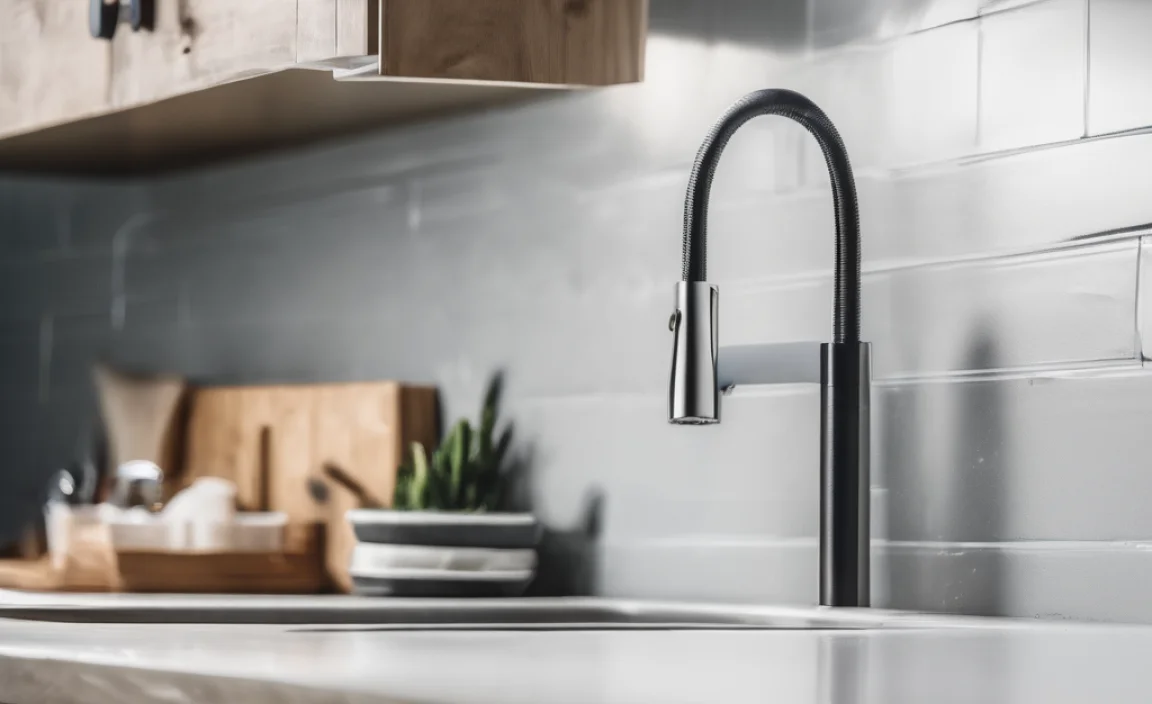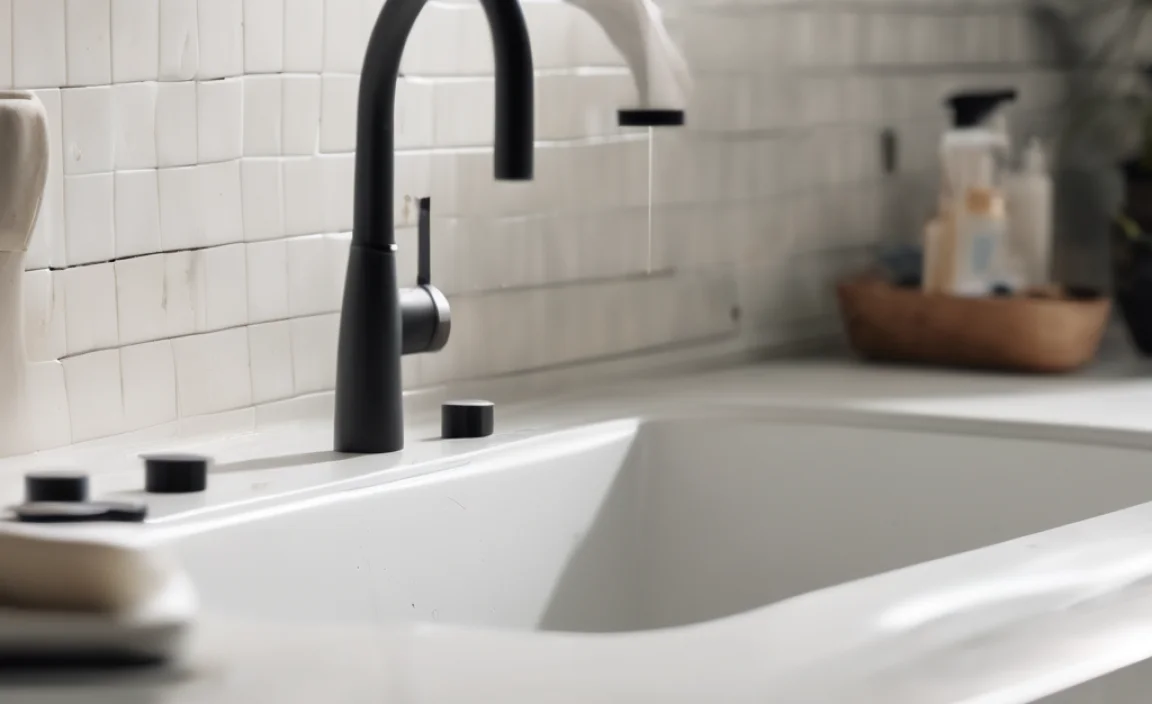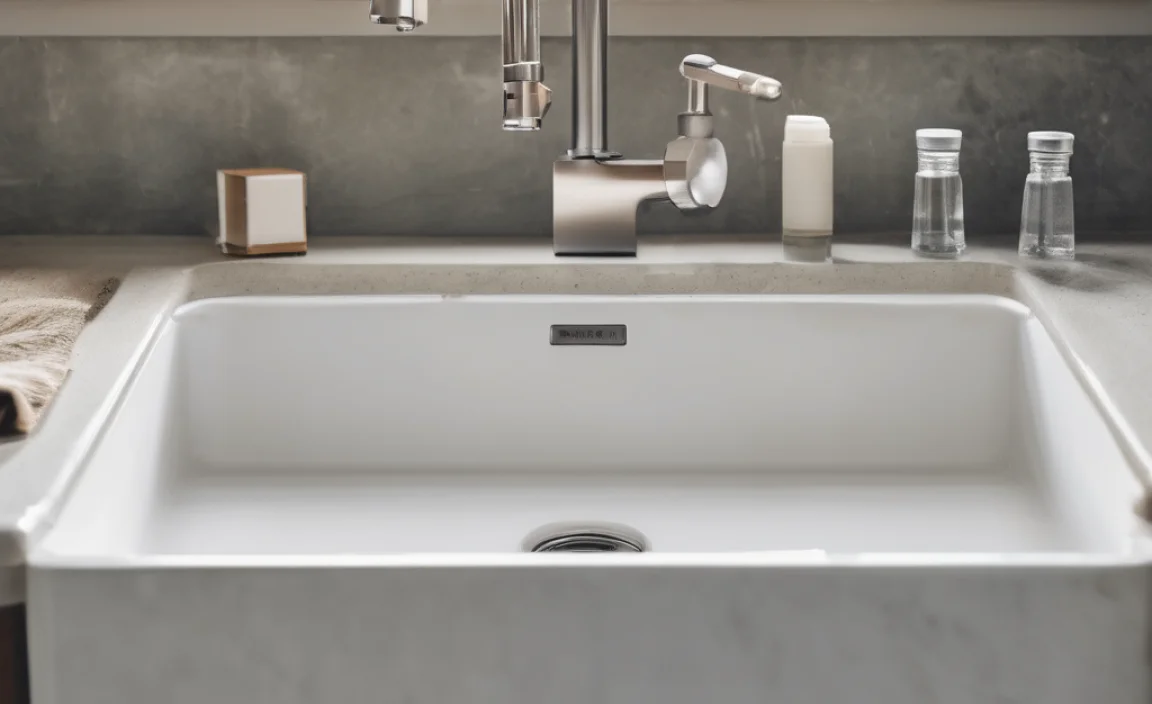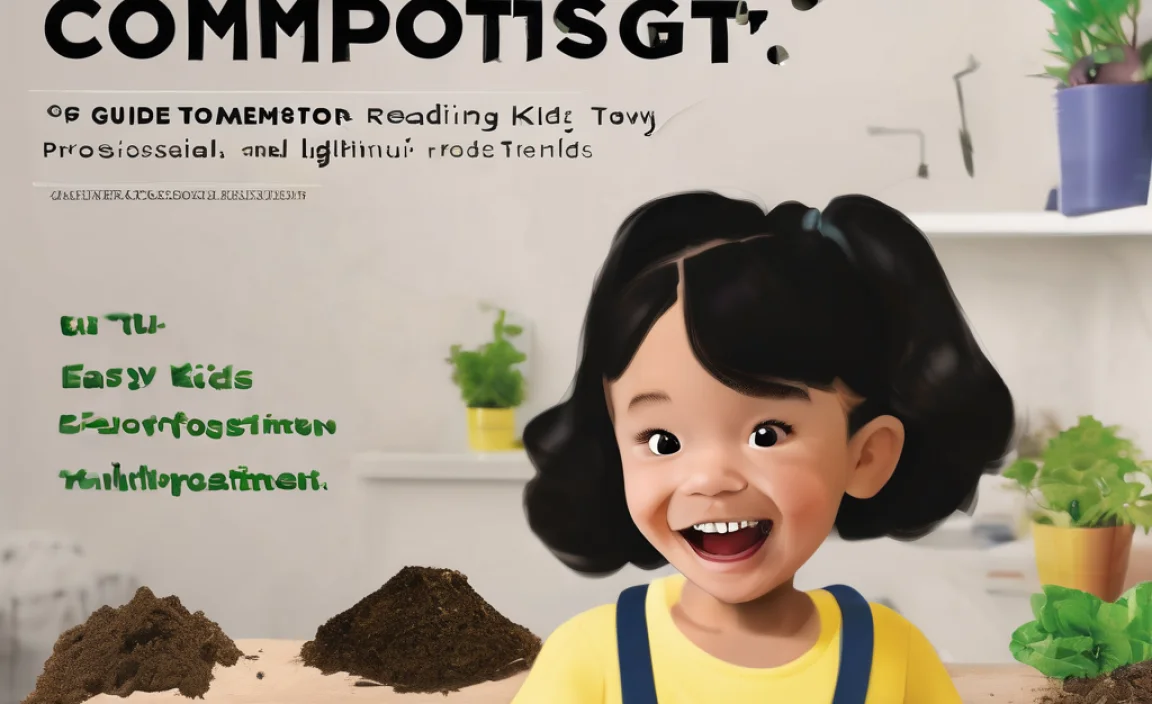Yes, mold under your sink can be dangerous. It often indicates a moisture problem that can lead to health issues like allergies and respiratory problems. Act quickly! Find the source of the moisture, clean the mold, and fix the leak to keep your home safe. If the mold is widespread, consider professional help.
Finding mold under your sink is a common problem for homeowners. It’s frustrating, but don’t worry! Mold loves damp places, and under the sink is a perfect breeding ground. Leaky pipes, spills, and condensation create the ideal environment.
The good news? You can tackle this issue yourself. We’ll walk you through identifying the mold, safely cleaning it up, and preventing it from coming back. Get ready to say goodbye to that mold!
What Causes Mold Under the Sink?

Mold needs moisture to grow. Several things can create the damp conditions mold loves under your sink:
- Leaky Pipes: Even a small drip can provide enough water for mold to thrive.
- Spills: Cleaning solutions, dish soap, or even water can pool under the sink.
- Condensation: Cold water pipes can create condensation, especially in humid environments.
- Poor Ventilation: Lack of airflow traps moisture, encouraging mold growth.
Is Mold Under the Sink Dangerous?

Yes, mold under the sink can be dangerous. Here’s why:
- Health Problems: Mold can cause allergic reactions, respiratory issues, and skin irritation.
- Property Damage: Mold can damage the structure of your cabinets and surrounding areas.
- Air Quality: Mold spores can circulate through your home, affecting indoor air quality.
Health Risks Associated with Mold
Exposure to mold can cause a range of health problems, especially for those with sensitivities or pre-existing conditions. The severity of symptoms can vary depending on the type of mold, the length of exposure, and individual health factors.
- Allergic Reactions: Common symptoms include sneezing, runny nose, itchy eyes, and skin rashes.
- Respiratory Issues: Mold can trigger asthma attacks, coughing, wheezing, and difficulty breathing.
- Irritation: Exposure can cause irritation to the eyes, nose, throat, and skin.
- Infections: In some cases, mold can cause fungal infections, especially in individuals with weakened immune systems.
Common Types of Mold Found Under Sinks
Several types of mold can be found under sinks, each with its own characteristics and potential health risks.
- Aspergillus: A common mold that can cause allergic reactions and respiratory problems. In individuals with weakened immune systems, Aspergillus can cause a serious infection called Aspergillosis.
- Cladosporium: This mold is often found on plants and can cause allergic reactions and asthma symptoms.
- Penicillium: Known for its role in producing penicillin, Penicillium can also cause allergic reactions and respiratory issues.
- Stachybotrys Chartarum (Black Mold): Often associated with severe health problems, black mold can produce mycotoxins that can lead to respiratory problems, neurological symptoms, and other health issues.
How to Identify Mold Under Your Sink

Mold can come in different colors and textures. Here’s what to look for:
- Visual Signs: Look for dark spots (black, green, brown) on surfaces.
- Musty Odor: A persistent musty smell is a strong indicator of mold.
- Water Stains: Discoloration or dampness on cabinets or walls.
Tools and Materials You’ll Need

Before you start, gather these supplies:
- Spray Bottle
- Cleaning Solution: White vinegar, diluted bleach (1 part bleach to 10 parts water), or a mold-killing product.
- Scrub Brush or Sponge
- Gloves
- Eye Protection
- Paper Towels or Rags
- Face Mask or Respirator
- Leak Detection Tools: Flashlight, dry cloths to check for new moisture.
Step-by-Step Guide to Cleaning Mold Under Your Sink

Follow these steps to safely and effectively remove mold:
Step 1: Safety First
Protect yourself! Wear gloves, eye protection, and a face mask. Open windows or use a fan to ventilate the area.
Step 2: Identify and Fix the Moisture Source
Before cleaning, find and repair any leaks. Use a flashlight to inspect pipes and connections. Dry any standing water.
Step 3: Prepare the Cleaning Solution
Choose your cleaning solution. White vinegar is a natural option. For tougher mold, use diluted bleach. Never mix bleach with other cleaners!
Step 4: Apply the Cleaning Solution
Spray the affected areas with the cleaning solution. Let it sit for 10-15 minutes to penetrate the mold.
Step 5: Scrub the Mold
Use a scrub brush or sponge to scrub away the mold. Apply firm pressure to remove all visible mold.
Step 6: Rinse and Dry
Rinse the cleaned areas with water. Dry thoroughly with paper towels or a clean rag. Make sure there is no standing water.
Step 7: Monitor and Prevent
Keep an eye on the area for any signs of regrowth. Use a dehumidifier to reduce moisture. Ensure proper ventilation.
Choosing the Right Cleaning Solution
Selecting the appropriate cleaning solution is crucial for effectively removing mold while minimizing potential health risks. Here’s a comparison of common options:
| Cleaning Solution | Pros | Cons | Best For |
|---|---|---|---|
| White Vinegar |
|
|
Mild to moderate mold growth |
| Diluted Bleach (1:10 ratio) |
|
|
Severe mold infestations on non-porous surfaces |
| Commercial Mold Removers |
|
|
Heavy mold growth, especially on porous surfaces |
| Baking Soda Paste |
|
|
Minor mold spots and maintenance |
Natural Mold Removal Options
If you prefer natural solutions, try these:
- White Vinegar: Spray undiluted vinegar on the mold and let it sit for an hour before wiping.
- Baking Soda: Mix baking soda with water to form a paste. Apply to the mold, let it dry, and then scrub.
- Tea Tree Oil: Mix a few drops of tea tree oil with water in a spray bottle. Spray on the mold and let it air dry. (Do not rinse)
Preventing Future Mold Growth
Prevention is key! Here’s how to keep mold from returning:
- Fix Leaks Promptly: Repair leaky faucets and pipes immediately.
- Improve Ventilation: Open windows or use a fan to increase airflow.
- Use a Dehumidifier: Reduce moisture levels in the air.
- Clean Regularly: Wipe up spills and keep the area dry.
- Monitor Humidity: Keep humidity levels below 60% to discourage mold growth.
When to Call a Professional
Sometimes, the mold problem is too big to handle on your own. Consider calling a professional if:
- Large Area: The mold covers a large area (more than 10 square feet).
- Health Concerns: You experience severe health symptoms after exposure to mold.
- Hidden Mold: You suspect mold is growing behind walls or in other hidden areas.
- Recurring Mold: You’ve cleaned the mold, but it keeps coming back.
Professional Mold Remediation Process
Professional mold remediation involves a thorough assessment, containment, removal, and prevention process.
- Inspection and Assessment: Professionals inspect the area to identify the extent of the mold growth and moisture sources.
- Containment: The affected area is sealed off to prevent mold spores from spreading to other parts of the building.
- Mold Removal: Moldy materials are removed and disposed of properly. Surfaces are cleaned and disinfected.
- Cleaning and Sanitizing: The area is thoroughly cleaned and sanitized to remove any remaining mold spores.
- Moisture Control: Professionals address the source of moisture to prevent future mold growth.
- Final Inspection: A final inspection is conducted to ensure the mold has been completely removed and the area is safe.
Cost of Professional Mold Remediation
The cost of professional mold remediation can vary depending on several factors, including the size of the affected area, the type of mold, and the extent of the damage. Here’s a general cost breakdown:
| Type of Remediation | Cost Range | Description |
|---|---|---|
| Minor Mold Removal | $500 – $1,500 | Small areas of mold growth, such as under a sink or in a small bathroom. |
| Moderate Mold Removal | $1,500 – $4,000 | Larger areas of mold growth, such as in multiple rooms or behind walls. |
| Extensive Mold Removal | $4,000 – $10,000+ | Severe mold infestations requiring extensive removal and repairs. |
DIY vs. Professional Mold Removal: A Comparison
Deciding whether to tackle mold removal yourself or hire a professional depends on the extent of the problem and your comfort level. Here’s a comparison to help you decide:
| Factor | DIY Mold Removal | Professional Mold Removal |
|---|---|---|
| Cost | Lower upfront cost; cost of supplies only. | Higher upfront cost; includes labor, equipment, and expertise. |
| Effectiveness | Effective for small, contained areas of mold. | More effective for large or hidden mold infestations. |
| Time | Time-consuming; requires personal effort and time. | Faster; professionals have the tools and experience to complete the job efficiently. |
| Safety | Requires proper safety precautions to avoid health risks. | Professionals use specialized equipment and techniques to minimize health risks. |
| Expertise | Requires knowledge of mold removal techniques and safety protocols. | Professionals have the expertise and training to identify and remove mold safely and effectively. |
FAQ: Mold Under Sink
Is all mold under the sink dangerous?
Not all mold is equally dangerous, but any mold growth indicates a moisture problem that needs to be addressed. Some molds are allergenic, while others can be toxic. It’s best to remove any mold you find.
Can I just paint over the mold?
No, painting over mold is not a solution. It only hides the problem temporarily and doesn’t kill the mold. The mold will continue to grow underneath the paint and can cause further damage.
How do I know if the mold is making me sick?
Symptoms of mold exposure include allergic reactions (sneezing, runny nose, itchy eyes), respiratory issues (coughing, wheezing), skin irritation, and headaches. If you experience these symptoms, consult a doctor.
What if I can’t find the source of the leak?
If you can’t find the leak, call a plumber. They have the tools and expertise to locate and repair hidden leaks that are causing the mold growth.
Can I use bleach to kill mold?
Yes, diluted bleach (1 part bleach to 10 parts water) can be effective for killing mold on non-porous surfaces. However, it’s essential to use it safely with proper ventilation and protective gear.
How long does it take for mold to grow under the sink?
Mold can start to grow within 24-48 hours in a moist environment. Regular cleaning and maintenance can help prevent mold growth.
Are there any preventative products I can use?
Yes, you can use mold-resistant paints, sealants, and dehumidifiers to prevent mold growth. Also, ensure proper ventilation and regularly inspect for leaks.
Conclusion
Finding mold under your sink can be alarming, but with the right approach, it’s a problem you can tackle. Remember to prioritize safety, identify and fix the moisture source, and choose the right cleaning solution. Whether you opt for a DIY approach or call in the pros, addressing the issue promptly will protect your health and your home. Don’t let mold take over – take action today!


